First aid training for individuals choking on food
500,000 ₫
Note: The above price is calculated per person. Prices may vary depending on the number of participants in the course and market fluctuations. For more accurate pricing, please refer to the price list or contact our consulting staff directly.
Table of Contents
Toggle1. Identifying a Person Choking on Food
a. Cases of people choking on food
Food choking is a dangerous situation that requires immediate action. Here are some cases in which a person may experience choking:
- Children: Children often cannot chew food or swallow in small pieces like adults, making them more prone to choking on hard, small, or heavy foods.
- Elderly: Older adults often have problems with swallowing and food passage, increasing the risk of choking.
- People with digestive issues: Conditions such as acid reflux, throat inflammation, weakened esophageal muscles, or other digestive problems may increase the risk of food choking.
- People with eating disorders: Individuals with eating disorders such as bulimia or anorexia also have a higher risk of choking due to abnormal eating habits.
- People with respiratory disorders: Diseases like bronchitis, asthma, or pulmonary vein issues can also create a risk of choking.
- People with neurological disorders: Certain neurological conditions, such as stroke, Parkinson’s disease, or nerve damage, may impair swallowing and increase the risk of choking.
If you or someone nearby experiences choking and cannot speak or act, call emergency services immediately.

b. Signs indicating someone is about to choke on food
Here are some signs that a person may be choking:
- Difficulty breathing: The person may struggle to breathe, cough, or experience airway obstruction.
- Difficulty speaking: When choking, the person may have trouble talking or pronouncing words. They may try to speak but their voice is affected.
- Hands moving to the neck area: A person choking may instinctively place their hands on their neck, trying to rub, pat, or move their hands up and down to dislodge the food.
- Inability or difficulty swallowing: The person may be unable to swallow or have difficulty doing so. They may attempt to swallow multiple times but the food does not move to the stomach.
- Pale or bluish skin: Without timely help, lack of oxygen can cause the skin to become pale or bluish.
- Warning signs of severe distress: If the person cannot speak or act and their condition worsens, it is a critical signal to call emergency services immediately.
If you notice any of these signs in someone nearby, ensure they receive prompt medical assistance.

c. Assessing the condition of a choking victim
Note that the following are only general assumptions based on common choking risks and cannot precisely determine the victim’s condition. In any suspected choking situation, calling emergency services immediately is crucial. Possible conditions include:
- Partial choking: If the airway is not completely blocked and air still reaches the lungs, the person can breathe, speak, and cough. However, they will still experience difficulty and discomfort while breathing.
- Complete choking: When the airway is fully blocked, the person cannot breathe, speak, or cough. They may lose consciousness, and their skin may turn blue or pale due to lack of oxygen. Immediate intervention is required to clear the airway and save the victim.
- Small food obstruction: Sometimes a small piece of food may get stuck and cannot be dislodged. The person may cough or breathe irregularly, feel short of breath, and be at risk of localized food obstruction.
Remember, assessing the victim’s condition is based on general information and does not replace professional medical diagnosis. Always call emergency services immediately if you or someone nearby is choking.

d. Golden time for food choking cases
The golden time in food choking cases is the critical period for saving the victim’s life. Within a few minutes, if the choking is not resolved, severe consequences can occur for the respiratory system and oxygen supply. The golden time varies as follows:
- Children: The golden time to save a child from choking is about 4 minutes. Beyond this, there is a risk of brain damage and long-term consequences.
- Adults: For adults, the golden time is approximately 4–6 minutes. However, it may vary depending on the individual case and health condition of the victim.
Rapid response is crucial when a person chokes. If the victim cannot speak or clear the airway themselves, calling emergency services immediately and performing rescue measures is essential. While waiting for medical support, you may attempt the Heimlich maneuver or manual choking relief techniques if trained.

2. Overview of first aid training for food choking victims
a. What is a first aid training course?
A first aid training course is a program designed to teach learners basic and advanced first aid skills. The program includes lessons and practical exercises on handling emergency situations such as cardiac arrest, respiratory failure, poisoning, injuries, and other urgent scenarios.
The goal of the course is to equip learners with the skills necessary to respond to emergencies, minimize harm to themselves and others, increase survival chances, and ensure timely transfer to medical facilities.
REGISTER FOR BASIC FIRST AID TRAINING
b. Training duration
Initial first aid training:
- For employees: 4 hours.
- For first aid and emergency responders: 16 hours (2 days).
Periodic first aid training:
- For employees: 2 hours.
- For first aid and emergency responders: 8 hours (1 day).
c. Course content
- Basic principles of first aid and on-site emergency care
- Wound bandaging (principles, tools, techniques)
- Temporary bleeding control techniques (principles and methods)
- Temporary fracture stabilization techniques (principles and tools)
- Cardiopulmonary resuscitation (recognizing signs of cardiac arrest, airway clearance, breathing support, CPR guidance)
- Burn management (assessing cause and severity, on-site first aid)
- Safe victim transportation with and without stretchers for initial care
- Specific emergency care scenarios:
- Electric shock
- Drowning
- Chemical accidents
- General guidance on first aid kit use
- Practical exercises for all content areas
d. First aid training certificate
Upon completing the course, learners will receive a certificate confirming their completion of the first aid training program under the Group 2 training framework as specified in Appendix IV, Decree 44/2016/ND-CP. The certificate is valid for 1 year.


3. Essential Tools in a First Aid Kit for Food Choking Incidents
In a first aid kit, the following tools are necessary to handle situations where someone is choking on food:
- Life-saving tongue (can be plastic): Used to remove the choking object from the person’s mouth. The life-saving tongue is specially designed to push the object out of the airway.
- Whistle (emergency signaling device): Used to stimulate the nervous system and alert those nearby in case the person choking loses consciousness or requires urgent attention.
- Mobile phone or emergency communication device: Used to call for emergency assistance immediately in case of a choking incident.
- First aid manual: A guide providing detailed instructions on how to handle choking emergencies.
- Medical gloves: To ensure hygiene and protect you from potential infections during rescue.
REGISTER FOR BASIC FIRST AID TRAINING
4. First Aid Procedure for Food Choking
Below is a basic first aid procedure for someone choking on food:
- Assess the situation: Determine whether the choking person can speak or move. Ask if they are choking or need help.
- Call for emergency help: As soon as you notice someone choking, call emergency services immediately to request professional medical assistance.
- Perform the Heimlich maneuver: If the choking person cannot speak, perform the Heimlich maneuver (abdominal thrusts) as follows:
- Stand behind the victim and place your hands above their waist.
- Place the other hand over the first to create a firm grip.
- Apply strong inward and upward pressure to generate sufficient force to expel the choking object from the airway.
- Repeat the process until the object is removed or medical personnel arrive to take over.
- If the person loses consciousness: If the choking person loses consciousness, place the victim on their side to ensure the airway is clear. Check the airway and, if necessary, perform CPR (cardiopulmonary resuscitation).
- Continue medical support: After calling for help, continue to monitor and assist the choking person until medical personnel arrive and take over.
Note that performing first aid for choking is urgent, but it requires proper training and confidence. If you are untrained or unsure, call emergency services immediately and wait for assistance.
5. Benefits of First Aid Training
First aid training offers many important benefits for individuals and communities:
- Saving lives in critical situations: First aid skills enable trainees to save someone whose life is at risk, such as in cases of cardiac arrest, respiratory arrest, poisoning, injuries, or other emergencies.
- Sharing skills with others: Trained individuals can share knowledge and experience with others, helping the community protect itself and reduce mortality in emergency situations.
- Reducing rescue response time: Trained first aiders can handle emergencies on-site, minimizing the waiting time for rescue teams to arrive.
- Enhancing response and reducing stress in emergencies: Training improves the ability to act accurately and quickly, reducing pressure and anxiety while waiting for help.
- Increasing survival rates and reducing fatalities: Timely and proper first aid increases the chances of survival and reduces complications or fatalities in emergency cases.

6. First Aid Training Capacity of An Toan Nam Viet
An Toan Nam Viet is a reputable and high-quality first aid training center in Vietnam, offering continuous training sessions at manufacturing workshops, factories, and construction sites across the country (all 63 provinces of Vietnam).
REGISTER FOR BASIC FIRST AID TRAINING
Training Certification
- An Toan Nam Viet has been inspected and certified by the Department of Safety under the Ministry of Labor – Invalids and Social Affairs, authorizing it to conduct occupational safety and hygiene training. Within the Group 2 training program, the first aid skills module is included, reinforcing the center’s capacity in first aid training.

Training Materials and Lectures
- Before first aid training materials are used in first aid training courses, they are reviewed to ensure accuracy and practical effectiveness.
- Instructors’ teaching methods are standardized according to An Toan Nam Viet standards, developed by experts in first aid training to maximize knowledge retention for trainees.
Facilities
- Controlling factors in the training room enhances teaching efficiency and knowledge absorption.
- Our training facilities provide spacious classrooms meeting standards for space, lighting, and training equipment, etc.
7. Nationwide First Aid Training Centers
An Toan Nam Viet is one of the most reputable and professional organizations for first aid training in Vietnam. With experienced instructors, modern equipment, and high-quality programs, the center has become an ideal destination for those interested in protecting lives and health.
By participating in An Toan Nam Viet courses, you will learn basic and advanced first aid skills, from helping people with cardiac arrest, respiratory arrest, poisoning, and injuries, to handling other emergency situations. The training programs are flexible and tailored to all learners, including adults, children, medical staff, rescue workers, and the general public.
An Toan Nam Viet’s first aid training center not only teaches essential life-saving skills but also cultivates awareness to protect yourself and others. Being trained by highly experienced and qualified instructors ensures confidence and readiness for any emergency situation.
Register for first aid training courses at An Toan Nam Viet to protect your life, health, and that of the community.
1 review for First aid training for individuals choking on food
No comments yet


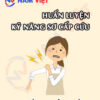
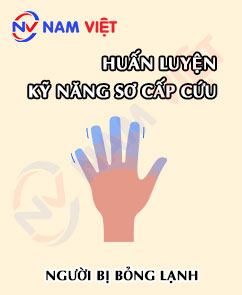
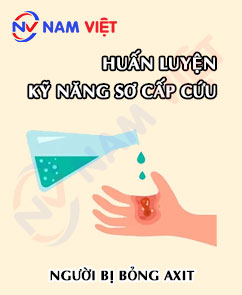
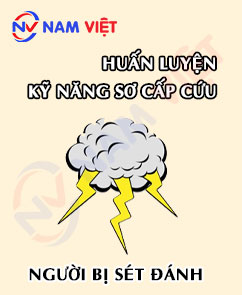



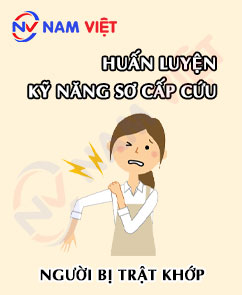

phanminhhang341
Very good and professional first aid training unit